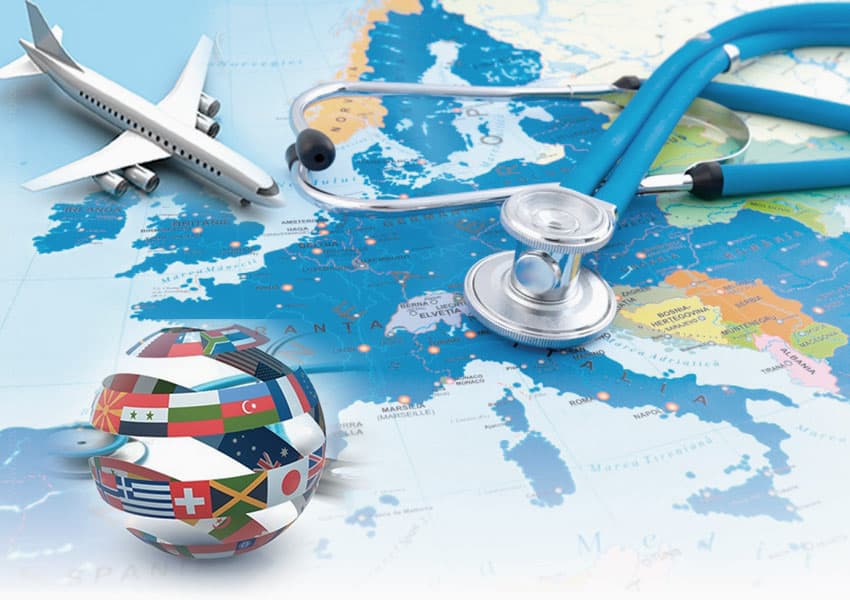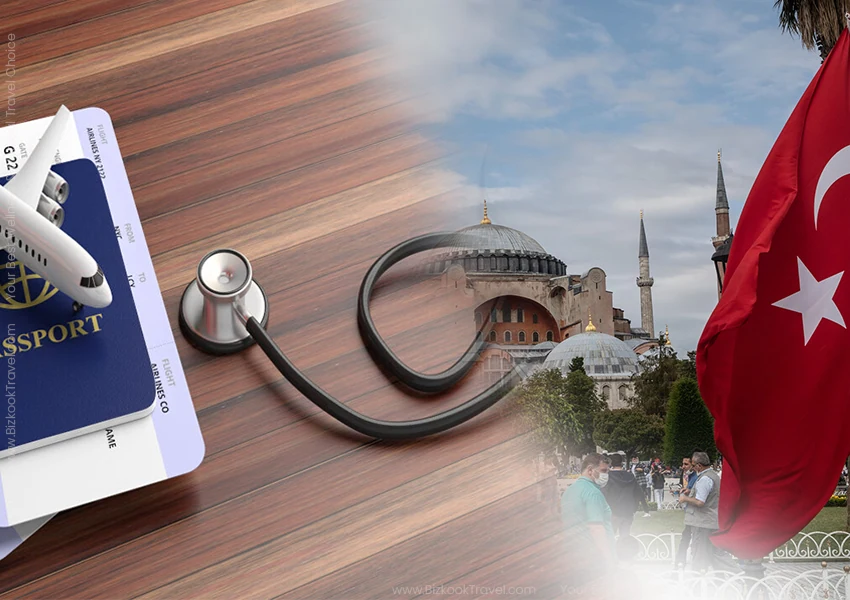What is Health Tourism?
Health tourism, also known as medical tourism, is an emerging phenomenon in the modern world, combining tourism and healthcare services. It refers to the process where individuals travel to other countries for high-quality, cost-effective, or faster access to medical services.
In today’s globalized medical era, with easy access to online medical information and international travel, health tourism has become a significant issue in national and global health systems. It encompasses many services, including dentistry, cosmetic surgery, organ transplantation, infertility treatments, and more.
A key aspect of health tourism is online information dissemination and remote communication with doctors and medical centers. These digital facilities have made medical trips more convenient and flexible. However, patients should research the expertise of doctors and the quality of healthcare in the destination country before traveling.
Medical tourism offers global healthcare opportunities, transcending national boundaries. For instance, patients in less developed countries may travel to more advanced nations for superior medical services. Conversely, patients from developed countries might choose less developed destinations for lower costs and quicker access.
Beyond medical services, health tourism also includes activities to improve or enhance individual health and well-being, such as hydrotherapy, using mineral waters, and enjoying specific climates.
Photo
With the rapid growth of this industry, issues like medical ethics, patient rights, and the impact on local healthcare systems are increasingly important. Some countries view health tourists as a vital source of income and economic development, while others express concerns about the impact on local healthcare access.
Despite all these interpretations, what really places the word “tourism” in the concept of health tourism is that individuals often stay in the foreign country after completing their medical procedures. Therefore, they can contribute as tourists in that country by sightseeing, taking day trips, or participating in other tourist activities. Individual motivations for choosing health tourism as a treatment method can be very different. These motivations may include reducing treatment costs, avoiding waiting times, improving quality, or accessing treatments that are not legal and available in their own country. Additionally, medical tourism affects the export and import of various medical and treatment systems through different methods.
Health tourism is a dynamic and evolving field that significantly impacts global healthcare, economic, and cultural systems. It highlights the growing need to understand the interplay between health, culture, and economics on a global scale, making it a critical aspect of contemporary life.
The History of Health Tourism: From Ancient Times to the Present
Health tourism has a long history, stretching back thousands of years. This type of tourism has undergone many changes from ancient times to the present day. In this article, we aim to thoroughly explore these developments and the key milestones in the history of health tourism.
Ancient Times: The Beginning of Health Tourism
The earliest recorded instances of health tourism date back to ancient times. Ancient Greeks from various regions of the Mediterranean traveled to Epidaurus, a place dedicated to Asclepius, the Greek god of healing. Believing in the healing powers of this place, they sought cures for their ailments there. Similarly, around 4000 years BC, the Sumerians built the first health complexes around hot springs.
Expansion of Medical Tourism in Europe: The Middle Ages and Renaissance
Hot springs became popular in Europe during the Middle Ages and the Renaissance. In the 18th century, Europeans traveled to these springs to use the therapeutic properties of the mineral waters. These waters were believed to help cure diseases like gout, liver disorders, and bronchitis. Also, during the Islamic Golden Age, hospitals like the Mansouri Hospital in Cairo provided medical services to many patients. Avicenna categorized health services in Iran into three groups: spiritual sanatoriums, therapeutic springs, and hot waters.
Flourishing Health Tourism in Ancient India and Rome
With the popularity of yoga and Ayurvedic medicine in ancient India, health tourists from all over the world visited India to benefit from these healing methods. In ancient Rome, the creation of baths and hot springs led to the development of centers for treatment and relaxation for the wealthy and nobility.
Transformation in the 20th Century: The Emergence of Modern Health Tourism
Before the 20th century, most healing journeys were based on natural and traditional treatments. However, with medical advancements in the 20th century, we see a transformation in health tourism. Countries like Costa Rica became popular cosmetic surgery and dentistry destinations in the 1980s and 1990s. Lower surgery costs in these countries attracted a large number of health tourists.
Significant Growth of Health Tourism in the 21st Century
In the early 21st century, health tourism reached a turning point. In 2010, about one and a half million Americans travelled to other countries for medical treatment. This significant growth indicates the global acceptance of health tourism and its expansion as a major industry.
The history of health tourism shows a continuous evolution and significant advancements in this field. From the initial journeys to use hot springs and healing temples in ancient times to the use of modern medical advancements in the 21st century, this industry has always been growing and developing. Today, health tourism is recognized as a method for treating illnesses and as part of recreational travel and health recovery.
Benefits of Health Tourism: Advantages and Reasons for Choosing Health Tourism as a Treatment Option
Health tourism has witnessed significant growth in recent years as a global phenomenon. In this article, we explore the benefits of health tourism and examine the reasons why patients travel to other countries for medical treatment.
Losing hope in treatment in their own country
People seek medical treatment abroad because of their disappointment with treatments in their home country and the lack of access to timely and affordable medical care. Inadequate insurance and income to cover local medical service costs also affect this decision-making process. Meanwhile, the high quality of medical care in developing countries, a variety of treatment options, the desire for medical care away from a monotonous environment, the absence of waiting lists, and the growing popularity of medical services abroad are other reasons for this trend.
Inadequate insurance and income to cover the costs of local medical services
Price is one of the most important factors attracting foreign patients. Medical services that are more affordable and cheaper compared to those in the patients’ home country encourage them to choose this option. The quality of medical services is often inversely related to the price, meaning that foreign patients expect higher quality treatment at lower costs than in their own countries.
High quality of medical and therapeutic care in developing countries
Weak medical infrastructure in the patients’ home city is also important in travelling to other countries. Advances in medical technologies and sciences have led patients to choose countries specialising in specific medical fields. Additionally, the attractions of the destination city also influence this decision.
There are no waiting lists
Performing many medical and cosmetic procedures can be extremely expensive in countries like the United States, Canada, and Australia. Furthermore, due to a shortage of medical personnel and infrastructure, patients often have to wait for months to receive treatment. Health tourism, and traveling to countries like Iran and others with strong medical infrastructures, eliminates waiting times, allowing patients to receive prompt treatment.
Access to the latest technologies and top surgeons and doctors
The existence of medical hubs and reputable medical brands in some cities has led to an increased number of patients from various countries seeking treatment in these cities. For example, with their latest medical technologies and tourist attractions, health clinics have become popular among many patients.
Each city and country is known or branded for a specific medical specialty. For instance, Iran is known for fertility and infertility treatments as well as cosmetic surgeries, while Thailand is renowned for gender reassignment surgeries.
Looking at the history of the health tourism industry, we see a shift from patients traveling from less developed countries to advanced countries to patients from richer and wealthier countries traveling to less developed ones. This change in pattern is mainly due to lower treatment costs, the availability of low-cost flights, shorter waiting times for medical services, increased marketing, and, consequently, easier access to online information.
Health tourism offers the opportunity to receive high-quality medical services at lower costs and the chance to experience different countries’ cultures and tourist attractions. This industry, especially in developing countries, is an important source of income and a way to develop medical and tourism infrastructure.
Medical tourism or health tourism contributes to the development of the economy and the standards of living of human civilization, and its importance and benefits are as follows:
- It is very impactful in economic development.
- It creates many health and medical jobs.
- It creates more health facilities.
- Access to the latest technologies in the medical sector.
- It improves the quality of life of all those involved in this process.
- Participation in global health.
- Increase and growth of global health standards.
- Exchange of knowledge and experience of specialists.
- Generating foreign income for the country and importing currency.
- Social benefits.
- Political benefits.
- Economic benefits.
Types of Medical and Health Tourism
Wellness Tourism:
In this type of health tourism, individuals travel to maintain and strengthen their health and spirit and to escape the stresses of daily life and rejuvenate, without medical intervention and supervision. Typically, these tourists do not have a specific physical illness and are more interested in benefiting from the healing nature and avoiding the crowds, stresses, and pollution of urban life.
Curative Tourism:
Curative tourism involves traveling to use natural healing resources (mineral waters, salt, mud, etc.) for the treatment of some diseases or to spend the convalescence period under the supervision and intervention of a doctor.
Medical Tourism:
This type of tourism generally involves treatment of a disease, undergoing surgery, or health check-ups in clinics and hospitals of a country with high medical facilities and reasonable treatment costs. Medical tourism is the most important and sensitive type of tourism as it is directly related to human life and health.
Challenges and Risks of Health Tourism
Given the nature of medical tourism and its novelty, this industry faces many challenges and obstacles, including language and technology issues. Health tourism also creates problems and challenges for the host country. Some of these challenges include:
- Post-operative follow-up and care in this type of treatment become very difficult. For example, if a person returns to their country after surgery and then gets an infection, the necessary care cannot be provided.
- Cultural and language barriers are one of the most important challenges in this industry, as if the medical staff and patient do not understand each other’s language and culture, the treatment process becomes much harder and more complicated.
- The spread of infectious diseases among health tourists in a country.
- Lack of adequate infrastructure in developing countries that host health tourists, such as poor quality food or inadequate and poor hygiene in hospitals and treatment centers. • Shortage of professional medical staff in some developing countries, and certain soft skills such as friendly behavior and empathy have not yet been incorporated into the behavior and characteristics of the medical staff in these hospitals.
- Problems with having a uniform and fair pricing system, and differences in the quality of services provided in hospitals in developing countries.
- The absence of any global standard law in this industry due to its novelty.
- Organ trafficking is still a serious issue in this industry and although it is illegal, body parts can still be purchased on the black market.
Photo
Understanding the Cost of Health Tourism
Medical tourism, a subset of health tourism, involves traveling to other countries for medical treatments or surgeries. This phenomenon, growing since the early 1990s due to globalization, currency rate changes, and economic crises in Asian regions, significantly impacts global health and economy.
A primary attraction of medical tourism is the significant reduction in treatment costs. For instance, spinal fusion surgery costs about $62,000 in the USA, while in Malaysia, it’s just $6,000. Generally, treatment costs in developing countries are about 30-70% lower than in developed countries.
However, a complete cost calculation must consider other aspects. Tourists should account for additional expenses like accommodation, transportation, international flight tickets, and food. Yet, even with these additional costs, tourists usually pay less overall compared to treatment in their home country.
The time and speed of surgical procedures are other important factors. In countries like Canada, the waiting time for hip surgery might be up to 26 weeks, whereas in countries like Iran, UAE, Turkey, Singapore, Taiwan, or India, these operations can be performed within a few days.
Given these factors, medical tourism has emerged as an attractive option for many global patients. This trend not only helps patients reduce their medical expenses but also enhances medical experiences and skills in host countries. It contributes to improving health care standards and promoting global health.
However, medical tourism faces challenges. Patients must know the quality of medical services in the destination countries and understand the risks associated with travel and surgery abroad. Moreover, this type of tourism might strain the healthcare systems of host countries, allocating resources that might be essential for the native population.
Medical tourism exemplifies how globalization impacts the health and medical sector. It provides new opportunities for patients but also introduces new ethical and managerial challenges for governments and health organizations.
The Best Destinations for Medical Tourism
In today’s modern world, medical and health tourism is growing fast in the travel industry. This type of tourism mixes health services with sightseeing, letting patients enjoy the beauty and attractions of the host country while getting treated. In this section, we explore the top destinations for medical tourism worldwide.
India: A Leader in Providing Affordable Medical Services
India offers advanced, quality medical services at affordable prices, making it a top medical tourism destination. The country provides a unique experience by combining advanced technology with its traditional architecture. Indian hospitals, with special services for foreign patients like airport transfers, free internet, and luxury facilities, ensure a comfortable and pleasant experience.
Iran: A Destination with High Standards in Medical Services
Medical tourism in Iran has gained global recognition due to its high medical standards and extensive research. The low cost of treatment has made Iran one of the most important health tourism destinations. There are two main groups of medical tourists traveling to Iran:
One group includes visitors from neighboring countries like Turkey, Iraq, Azerbaijan, Pakistan, Oman, and Afghanistan. They usually seek life-saving treatments and cosmetic surgeries such as ophthalmology, infertility treatments, open-heart surgery, spinal surgeries, and organ transplants in Iran. The other group consists of tourists from more developed countries, who are more interested in aesthetic services like bariatric surgery, plastic surgery, hair transplants, breast surgery, and gastric sleeve surgery.
Iran, with its natural and advanced medical facilities, has seen significant growth in the medical tourism industry. The country is home to mineral water springs in most provinces and desert areas like Qom. In fields such as infertility treatment, dental services, dialysis centers, heart surgery, plastic surgery, ophthalmology, orthopedics, and bone marrow transplantation, Iran has made considerable advancements. These developments encourage medical tourists to travel to Iran.
Brazil: The Center of Cosmetic Surgery in Latin America
Thanks to its reputable hospitals and renowned surgeons, Brazil is famous for its quality medical services, especially cosmetic and plastic surgery. Brazil is an ideal destination for medical tourists, offering high-quality care and international standards.
Malaysia: A Blend of Luxury and Care
Winner of the International Medical Travel Journal’s award, Malaysia offers a luxurious experience with its hospitals featuring five-star rooms and extraordinary amenities. The country’s healthcare centers, providing advanced services and hydrotherapy facilities, are increasingly popular among tourists.
Thailand: Hospitality and Aesthetics
Thailand, known for its world-class hospitals and advanced dental and skincare services, is a popular health tourism destination in Asia. The country offers a unique patient experience with services like Thai massage and private recovery gardens.
Turkey: A Fusion of Innovation and History
Turkey, offering medical services in various fields, including genomic medicine, orthopedic surgery, and neurosurgery, has become an important centre in medical tourism. Turkey has established its position in this field by merging medical skills with tourism infrastructure and affordable quality services.
Mexico: A Mix of Culture and Treatment
Mexico, with its reputable hospitals and advanced dental and cosmetic surgery services, is an attractive medical tourism destination for international patients. Blending its rich cultural and artistic heritage with quality medical care, Mexico provides a memorable experience for tourists.
Costa Rica: A Leader in Medical Tourism
Costa Rica provides quality medical services in areas like dentistry, eye surgery, and cancer treatment, making it a leader in medical tourism. Costa Rica has strengthened its position in the medical tourism landscape by focusing on affordable and high-quality care.
Panama: A Blend of Tourist Attractions and International Healthcare Services
Panama has become one of the leading destinations in the medical tourism industry, thanks to its bilingual medical professionals, international standards, and use of the US dollar. With a combination of tourist attractions and world-class healthcare services, Panama offers a unique experience for travelers seeking medical treatment abroad.
Necessary Steps Before Starting a Journey for Medical Tourists
Health tourists should preferably consult a specialist in this field 4 to 6 weeks before their trip. They should also talk to healthcare providers in the destination country before deciding to travel and obtain all necessary information, including pre and post-operative care, to avoid ambiguity in the travel and treatment process. If a person is ill, they must be able to control their current conditions well before traveling and ensure that they have enough medications during the trip. All patients should ideally have been vaccinated before traveling, such as the hepatitis B vaccine. If health tourists develop any complications after returning from their trip, they should immediately seek emergency medical care and provide all information, including medical records, surgical and treatment histories from their trip, to their treating physicians.











Post Discussion